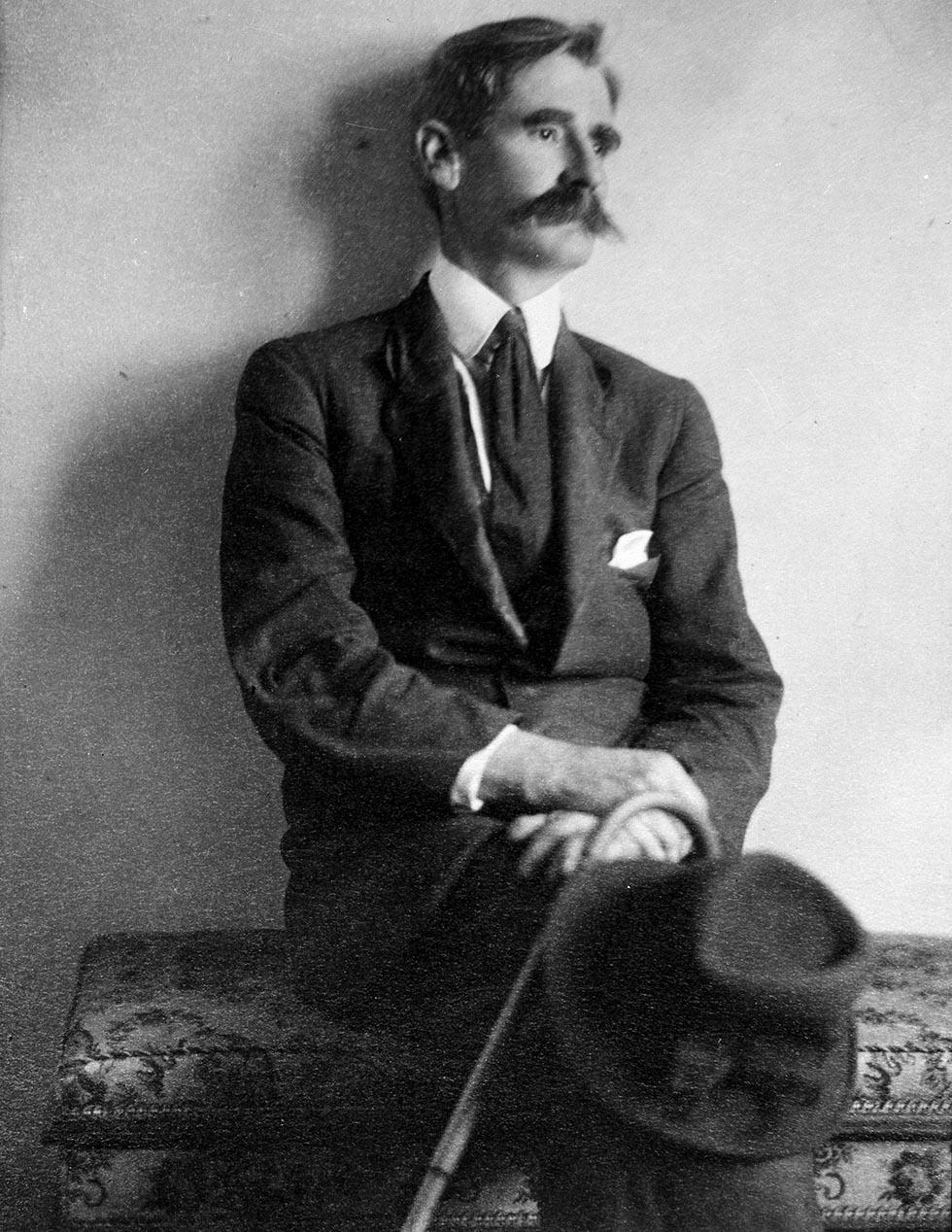


About this record
This black-and-white photographic portrait shows the Australian poet and short-story writer Henry Lawson. His thin face, dominated by his characteristic bushy moustache, is turned away from the camera and he stares into the distance in a pose of contemplation and sadness. Sitting cross-legged on an upholstered bench and leaning back onto a wall, Lawson displays the two trademark accessories of his later life – a large felt hat and a walking stick.
Educational value
- Henry Lawson (1867–1922) is a key figure in Australian literature. He was among the first writers of popular short stories and poetry that captured an emerging sense of national identity, even before the birth of the nation in 1901. Lawson wrote at great length about the land. Most of his works have a 'bush' theme and many, such as 'The Drover's Wife' (1892), depict the lives and characters of those who lived in the Australian bush and knew its harsh realities.
- By the time he reached his late 40s, his presumed age in this portrait, Lawson's most productive years were over. His unsmiling, pensive stare was not unusual for a portrait photograph of the era, but there is more than a hint of sadness. By this stage of his life, Lawson had frequently been jailed for failure to pay maintenance for his two children and he was well known on the streets of Sydney as a chronic alcoholic.
- In his younger adulthood, Lawson had established his reputation as a fine writer and was very prolific. His first major collection of short stories, While the Billy Boils (1896), and another collection, Joe Wilson and His Mates (1901), both published in this early period, are regarded as Australian classics.
- As well as being a fervent nationalist, Lawson was a strong socialist and social reformer. This is reflected in his support for ordinary people ('Faces in the Street', 1888) against those who oppressed them ('Freedom on the Wallaby', 1891). He was a staunch republican ('A Song of the Republic', 1887) and believed the events at the Eureka Stockade were fundamentally important in Australia's historical development ('The Fight at Eureka Stockade', 1890 and 'Australia's Forgotten Flag', 1911).
- Lawson's life was one of physical and mental difficulty. By the time he was 14 he had suffered major hearing loss, and later in life paralysis in one of his legs left him with a limp, hence the walking stick. All his jobs were relatively short-lived and the pressure of supporting a family by writing was relentless. In 1902 he attempted suicide and from 1907 he was admitted to mental hospitals several times. He became an increasingly frail figure, dying of a stroke in 1922.
- A celebrity in Sydney during his life, Lawson is today remembered for the quality of his prose, exemplified in his best short stories such as 'The Loaded Dog' (1901), rather than for his poetry. His literary legacy has been commemorated by his appearance on Australian currency. The first 10-dollar note showed his profile, taken from the later years of his life, set against a background of scenes from his childhood on the goldfields in New South Wales.
Acknowledgments
Learning resource text © Education Services Australia Limited and the National Archives of Australia 2010.
Related themes
Need help with your research?
Learn how to interpret primary sources, use our collection and more.



